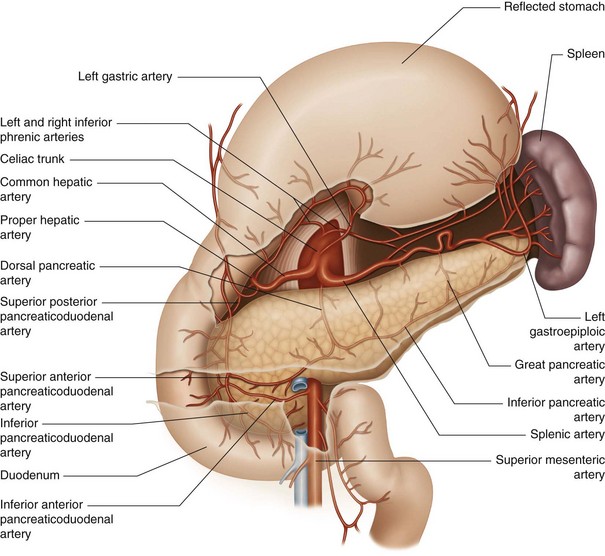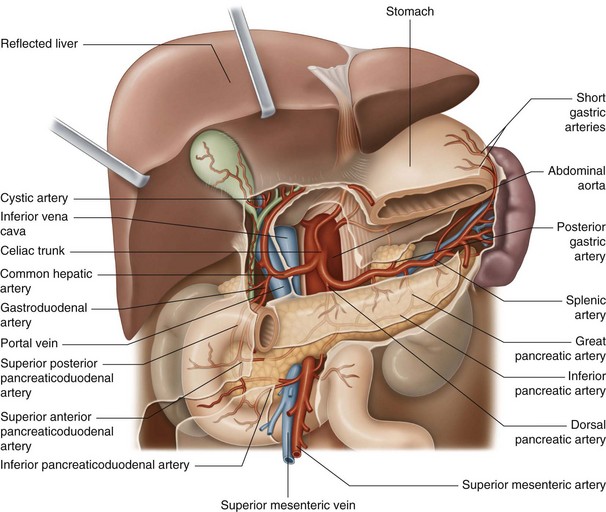28 Pancreaticosplenic vessels
28.1 Anatomy
28.1.1 The pancreas
We have seen that the arterial supply of the pancreas derives mainly from branches of the gastroduodenal artery (via the superior anterior and superior posterior pancreaticoduodenal arteries as intermediaries) and the splenic artery (Fig. 28.1).
28.1.2 The spleen
The spleen is a retroperitoneal organ, with a mobility of about 10 cm, weighing on average 200 g (see Fig. 28.1). Unlike lymph nodes, the spleen is connected directly to the blood circulation, making it suitable for visceral vascular manipulation.
The spleen articulates by way of peritoneal folds with the:
28.1.3 The splenic artery
The splenic artery is the largest branch of the celiac trunk, and its course is amongst the most tortuous in the body. It runs behind the omental bursa, along the superior border of the pancreas (Fig. 28.2).
28.2 Manual approach
28.2.1 Right lateral traction technique
To stretch both the transverse pancreatic arteries and the splenic artery, hook the medial border of the duodenum with two flat fingers. Draw the duodenum to the right, while applying a light counterpressure on the left part of the pancreas (Fig. 28.3).
Stay updated, free articles. Join our Telegram channel

Full access? Get Clinical Tree











